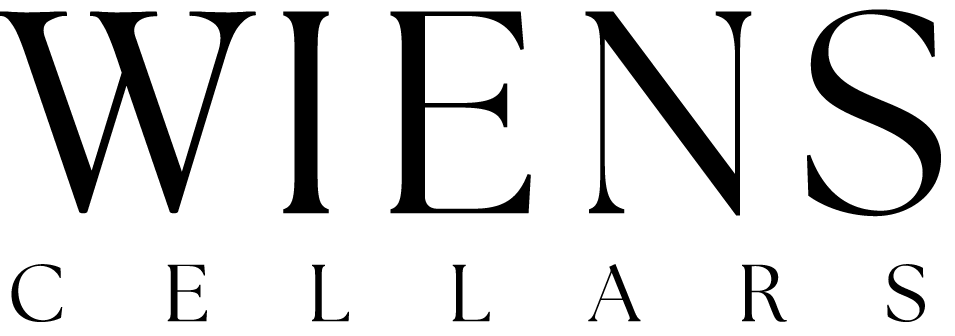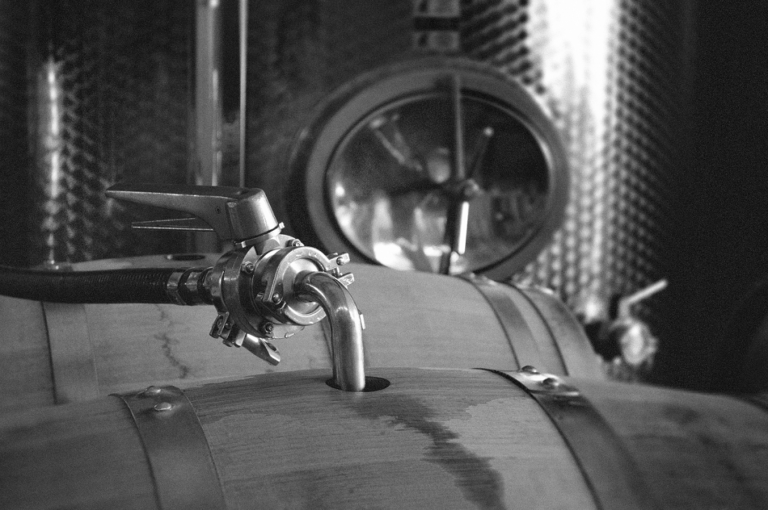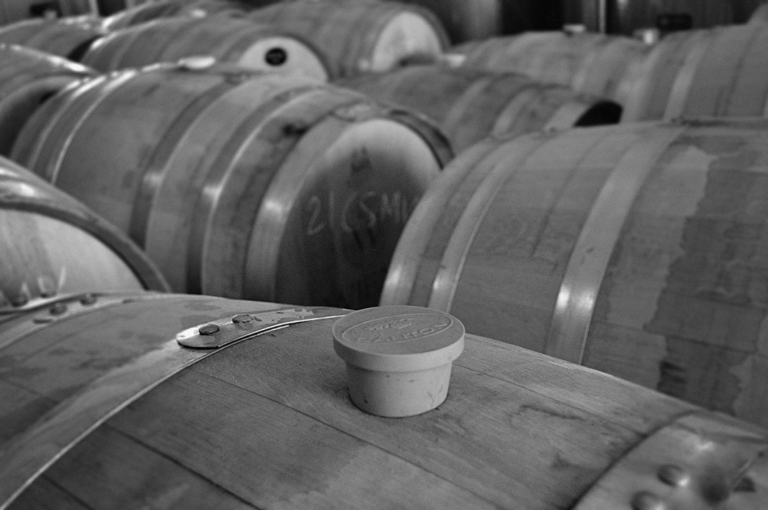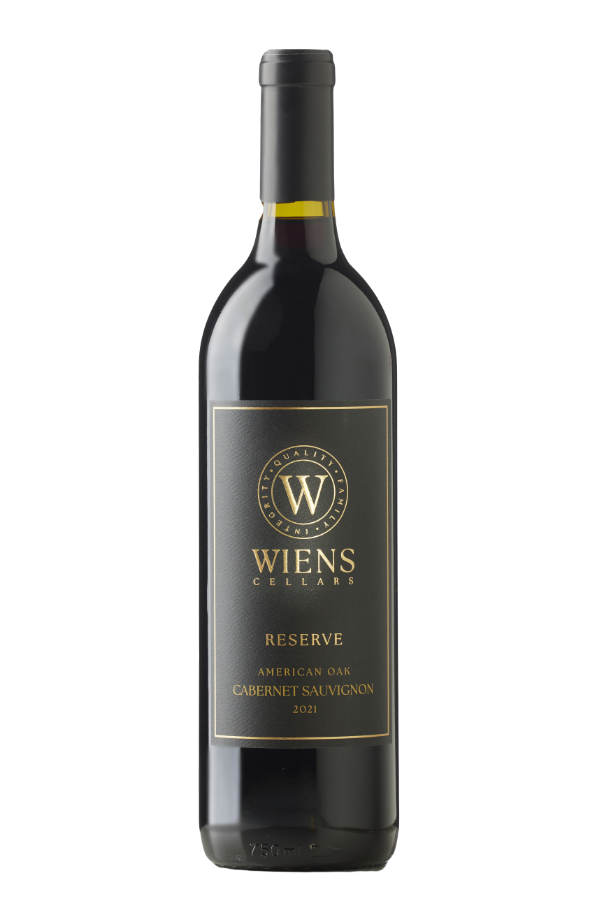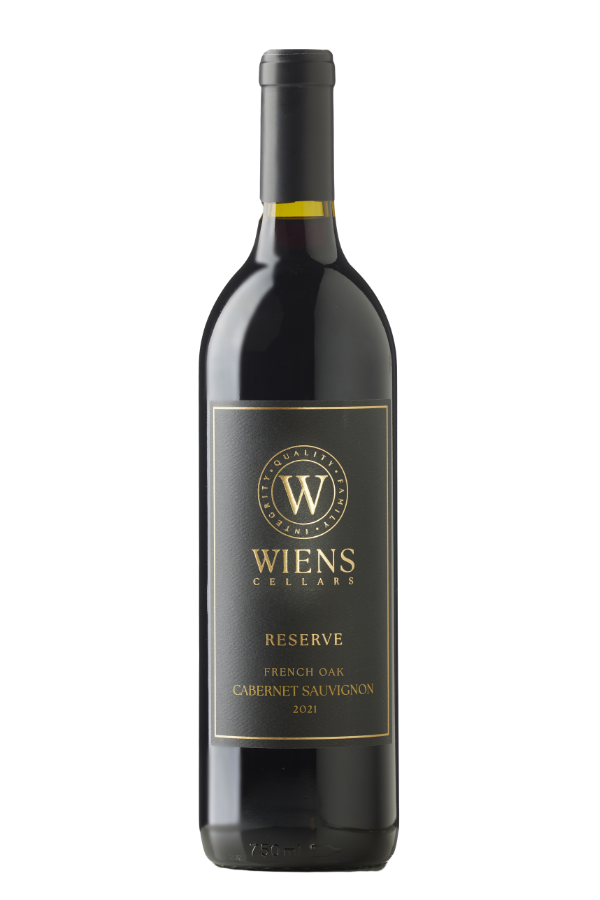In the world of winemaking, there are countless elements that play a role in shaping the final flavor, aroma, and texture of a wine. One of the most significant is the type of oak barrel used for aging. While factors such as grape varietal, terroir, and winemaking techniques are critical, oak barrel aging is a key component that can elevate a wine’s profile, imparting unique characteristics that dramatically affect the tasting experience. Among the most influential differences in oak aging is the choice between American and French oak barrels.
In this post, we’ll delve into the key differences between American and French oak and explore how they impact the wine aging process. Using our own 2021 American Oak Cabernet Sauvignon and 2021 French Oak Cabernet Sauvignon as prime examples, we’ll discuss how these barrels contribute to the distinct qualities of the wines, providing a glimpse into the fascinating world of oak-aging in winemaking.
The Role of Oak in Winemaking
Before diving into the specific differences between American and French oak, it’s essential to understand why winemakers use oak barrels in the first place. Oak aging enhances the wine’s flavor profile and texture through several key processes:
- Oxygen Exposure: Unlike stainless steel, oak barrels allow a small amount of oxygen to penetrate the wine during aging. This micro-oxygenation process softens tannins, increases the wine’s complexity, and improves its ageability.
- Extraction of Oak Compounds: As wine interacts with the wood, it extracts compounds from the oak that enhance its flavor, aroma, and texture. These compounds, including tannins, lactones, vanillin, and lignin, impart flavors such as vanilla, spice, coconut, and caramel, while also adding structure and body to the wine.
- Integration of Aromas and Flavors: Oak barrels help the various elements of the wine (fruit, acidity, tannin) meld together harmoniously over time, resulting in a balanced and well-rounded final product.
American Oak vs. French Oak: What’s the Difference?
When winemakers choose oak barrels, one of the most significant decisions is the origin of the oak. American and French oak are the two most commonly used varieties, and each type imparts distinct characteristics to the wine.
One of the most notable differences between American and French oak lies in the grain structure of the wood. French oak typically has a tighter grain, which means it releases flavors and tannins more slowly and subtly into the wine. As a result, French oak often produces wines with more nuanced, delicate flavors and softer tannins.
In contrast, American oak has a looser grain, which allows it to impart flavors more quickly and boldly. Wines aged in American oak are often described as having more pronounced flavors of vanilla, coconut, and sweet spices, along with a richer, fuller mouthfeel.
In the case of our 2021 American Oak Cabernet Sauvignon, this wine showcases the bold characteristics of American oak, with more overt notes of toasted coconut, sweet vanilla, and a fuller, richer tannin structure compared to its French oak counterpart. These characteristics make American oak a popular choice for New World wines that emphasize bold, fruit-forward expressions.
- Flavor Intensity and Subtlety
As a general rule, wines aged in American oak tend to have more intense flavors. These wines often display robust notes of vanilla, coconut, dill, and caramel. In comparison, wines aged in French oak exhibit more subtle, refined flavors such as baking spices, cinnamon, cloves, and a delicate minerality.
Our 2021 French Oak Cabernet Sauvignon, for example, exemplifies the elegant influence of French oak, with softer, more integrated notes of vanilla, spice, and a fine grain tannin structure that highlights the wine’s fruit flavors without overpowering them. The French oak aging process tends to preserve the wine’s natural aromas and fruit character, resulting in a more restrained, sophisticated expression.
- Tannin Structure
Another key difference between American and French oak barrels is the tannin structure they impart to the wine. French oak typically lends a finer-grained, more elegant tannin profile, while American oak contributes bolder, more assertive tannins. This difference can have a significant impact on the mouthfeel and aging potential of the wine.
Wines aged in French oak, like our 2021 French Oak Cabernet Sauvignon, tend to be more age-worthy due to the balanced integration of tannins. These wines often develop beautifully over time, gaining complexity and depth with age. Meanwhile, wines aged in American oak, such as our 2021 American Oak Cabernet Sauvignon, may offer a more approachable, fruit-forward experience in their youth, with robust tannins that contribute to a fuller-bodied wine.
- Aromatic Influence
One of the most enjoyable aspects of tasting wine is savoring its aromas, and oak aging plays a significant role in shaping the wine’s bouquet. The aromatic differences between American and French oak are a key factor in the winemaking process.
French oak tends to impart more subtle, spice-driven aromas to the wine, such as clove, cinnamon, and nutmeg. This is ideal for winemakers looking to enhance the wine’s aromatic complexity without overpowering the primary fruit notes. In contrast, American oak is known for contributing bold aromas of vanilla, coconut, and sweet spices, which can dominate the wine’s nose but also add a comforting warmth to the aromatic profile.
Our 2021 French Oak Cabernet Sauvignon offers elegant, understated aromas of cinnamon and clove, while the 2021 American Oak Cabernet Sauvignon delights the senses with rich notes of vanilla and toasted coconut.
It’s important to note that winemakers can also influence the flavors imparted by both types of oak barrels by choosing different toast levels. The term “toast” refers to the level of heat applied to the inside of the barrel during production. A light toast imparts more subtle flavors, while a medium or heavy toast brings out stronger notes of caramel, spice, and smoke.
Our winemakers, Joseph Wiens and Brian Marquez, carefully selected medium-toast American oak barrels for the 2021 American Oak Cabernet Sauvignon, enhancing the wine’s rich vanilla and coconut notes. For the 2021 French Oak Cabernet Sauvignon, they opted for medium-toast French oak barrels, which provided a more subtle, spice-driven character that complements the wine’s fruit flavors without overwhelming them.
- American Oak vs. French Oak: Which Is Better?
Ultimately, the choice between American and French oak comes down to personal preference and the style of wine the winemaker wants to produce. While American oak offers bold, expressive flavors and a fuller-bodied structure, French oak brings subtlety, elegance, and balance to the wine.
In our 2021 Cabernet Sauvignon releases, we’ve given wine lovers the opportunity to experience the best of both worlds. Whether you prefer the robust, fruit-forward character of the American Oak Cabernet or the refined, complex profile of the French Oak Cabernet, both wines showcase the incredible impact oak aging has on the final product.
Tasting Our 2021 American Oak Cabernet Sauvignon vs. 2021 French Oak Cabernet Sauvignon
To fully appreciate the difference between American and French oak, we encourage you to taste these wines side by side. Here’s what you can expect from each:
2021 American Oak Cabernet Sauvignon
- Tasting Notes: This wine offers bold aromas of vanilla, toasted coconut, and caramel, along with flavors of ripe blackberries, currants, and a hint of sweet spice. The tannins are assertive yet smooth, providing a rich, full-bodied mouthfeel.
- Food Pairings: Pair with grilled steaks, BBQ ribs, or hearty stews.
2021 French Oak Cabernet Sauvignon
- Tasting Notes: This wine displays more delicate aromas of baking spices, cinnamon, and clove, with flavors of dark cherries, plums, and a subtle minerality. The tannins are fine-grained and elegant, offering a balanced, silky finish.
- Food Pairings: Enjoy with roasted lamb, mushroom risotto, or aged cheeses.
The Future of Oak Aging at Wiens Cellars
As we continue to explore the art of winemaking, we remain committed to experimenting with both American and French oak to create wines that express the unique characteristics of each varietal. Whether you’re a fan of bold, expressive wines or prefer the elegance and subtlety of French oak, our diverse range of wines offers something for every palate.
Next time you visit Wiens Cellars, take the opportunity to taste our 2021 American Oak Cabernet Sauvignon and 2021 French Oak Cabernet Sauvignon side by side. It’s a fascinating way to experience how oak influences the flavor, texture, and overall character of the wine, and we’re sure you’ll walk away with a deeper appreciation for the magic that oak aging brings to the winemaking process.
Whether you’re a seasoned wine enthusiast or just starting your journey into the world of wine, understanding the difference between American and French oak is key to appreciating the complexity and depth that oak aging brings to each bottle. The unique characteristics imparted by each type of oak can dramatically alter the flavor profile and structure of the wine, making oak barrel aging one of the most essential tools in the winemaker’s repertoire.
So, the next time you pour a glass of wine aged in oak, take a moment to consider the journey that wine has taken—from the vineyard to the barrel and finally to your glass. Whether it’s the bold, expressive character of American oak or the refined elegance of French oak, each sip offers a taste of the craftsmanship that goes into every bottle.
